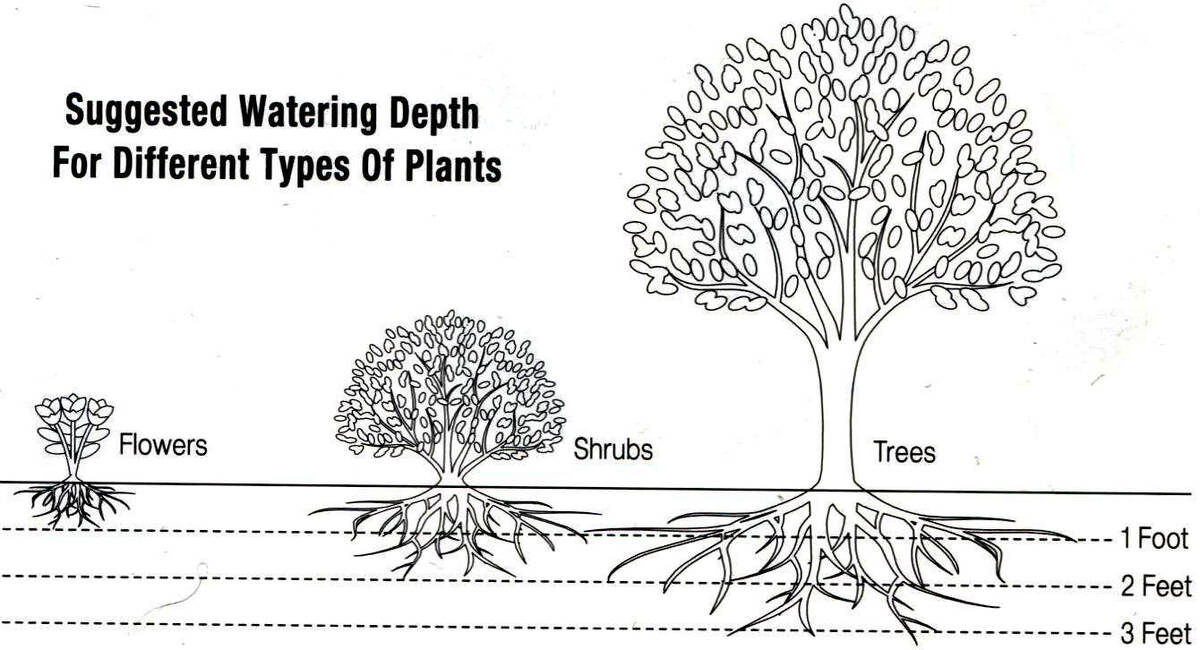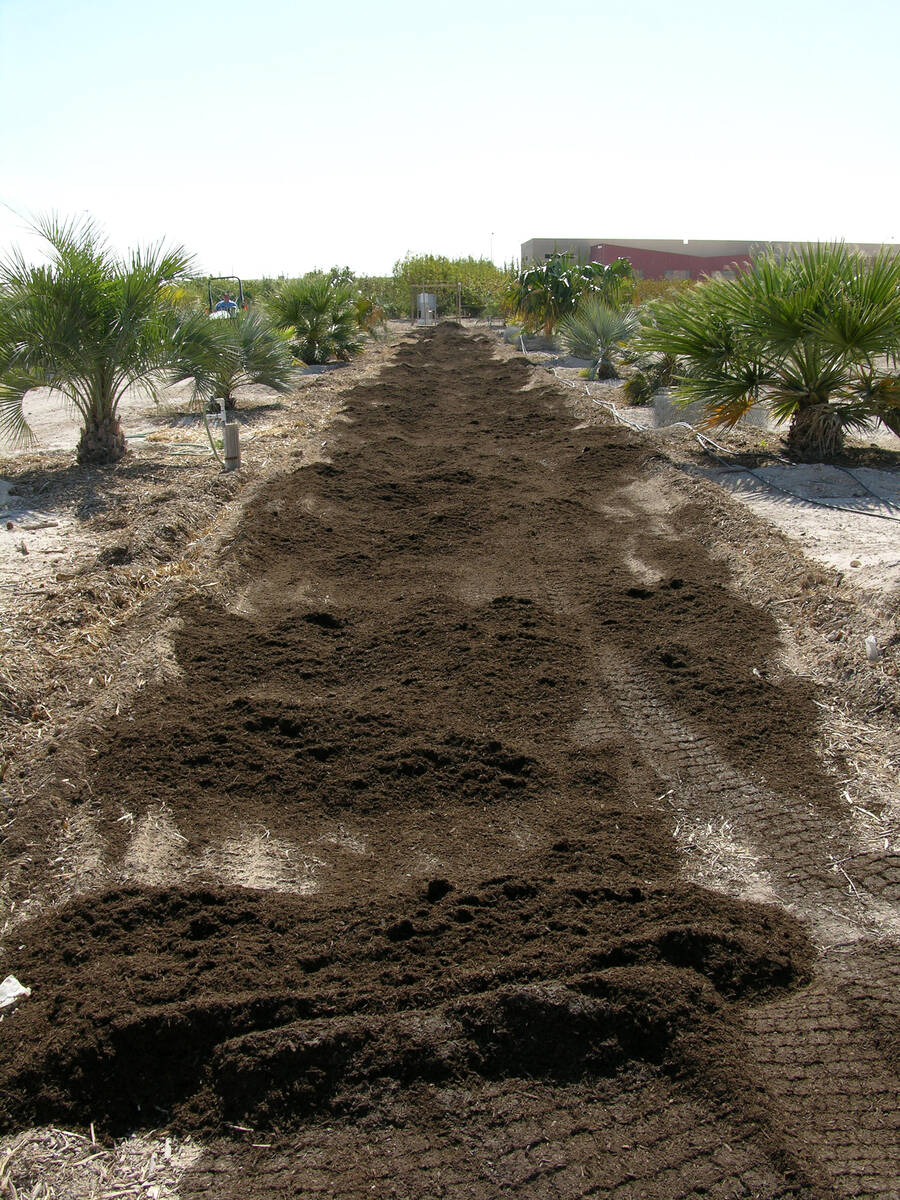How much water does your landscape need?
Mesic plants (which include trees and shrubs) come from wet regions and have evolved there, so that’s what they are used to. Examples include our famous mulberry trees but can also include Mediterranean trees (i.e., pistache varieties such as the popular red push).
Obviously, the amount of water that a mulberry tree requires should be different from the red push variety of the Mediterranean climate- evolving pistache tree. But no one knows how much difference because it’s guesswork. Professionals gather around the table and guess how much water these plants use. This is how plant lists begin, because the research needed to find this out is quite expensive.
Most often, mesic plants will adjust and tolerate the frequent watering that lawns require.
Xeric plants (which also include trees and shrubs) are found typically in desert areas and have evolved there. They usually will not survive the frequent watering that lawns require. They will die when watered that often.
The lowest water-use plants are xeric (dry tolerant) in their water use. Xeric plants can go a long time without water, but their appearance changes with time away from water. How much change depends on how much you and your landscape can tolerate. The first observable change is leaf drop, which is your signal they need water soon. The second change is branches dying. The time between the two depends on the season. The heat of the summer has the fastest change, with usually about one to four weeks before branch dieback occurs.
The watering technique used starts with the design of the irrigation system. This is called hydro-zoning. The difference is in how often the valves emit water. Xeric plants need water less often than mesic plants — a good example are native cactuses.
The hydro-zoning technique is well known among professional irrigation designers but seldom practiced here. In a real-life scenario, mulberry and pistache trees are fed water by one valve and xeric plants by another valve.
Q: You posted pictures about watering with the depth of a plants root system. How do trees survive in lawns then?
A: Some trees survive in lawns and others don’t. As a rule of thumb, mesic (nondesert) trees will survive in lawns and xeric (desert) trees will not. For instance, ash trees (mesic) will survive in a lawn. Xeric trees such as foothill palo verde will struggle in a lawn.
Plants are lazy, and their roots grow best where they can easily get water mixed with air. That concept pertains to both mesic and xeric trees. Daily watering during the summer means the roots of mesic trees growing in a lawn will have roots all through the soil surface, where they can get air and water the easiest.
Removing the lawn also removes this distribution of water and air. Instead, these trees must survive on the water provided through drip emitters. That is a change from watering the lawn to watering shrubs. Is that enough water? Is the water provided in the right distribution? Is the water provided to the tree in the right spots? You will find out usually the following summer when it gets hot. By the way, surface mulch (rock or wood chips) helps stop the water from evaporating from the soil during the heat of the day.
Besides water, roots of tall trees provide stability in windy conditions. A general rule of thumb is to water deeply according to the tree’s height. For instance, tall trees growing without a lawn should be watered to a depth of 3 feet to provide stability.
Q: This may be a bit too amateurish for your column, but I need help with iceberg roses. I pulled the rock away and fertilized this past spring. I thought the roses I planted in pots would do better, but they don’t. I ask the nurseries when I go but get conflicting information. Why are there holes in the flowers? When I see dark leaves that look diseased, I pull them off. When I deadhead and trim back (five sets of leaves), I sanitize the shears to not spread any potential disease from bush to bush. Is there anything else you see?
A: Whenever I hear roses, my thoughts go to plant location relative to the house and soil enrichment. They are the most important. Make sure that any type of rose is a good 3 to 4 feet from any hot wall. Roses grow best in full sunlight with plenty of air movement on east or north sides of homes in the hot Mojave Desert.
During the planting season (never summer), the soil should be amended with compost and covered with a 2- to 3-inch layer of wood chips. The best wood chips to use are those that are chipped from local trees rather than a “bark” mulch.
The old-fashioned iceberg rose is a bush rose, 3 to 4 feet tall and bearing medium-sized, white flowers in the spring and fall here. Iceberg roses are pruned at the same time as other roses, usually in late January. The iceberg rose has been bred to be a climber (10 to 12 feet) in more recent years with the same color flowers and scent as the original 1958 rose.
Q: I see online some people cut the roots of asparagus before planting. I did this last year. Is it a good idea? I was thinking of planting asparagus at the base of fruit trees. It makes them easier to plant, but are there consequences?
A: As to cutting the roots of asparagus and what consequences might occur, I must guess since I don’t have much experience with that. They are both deep-rooted, so I don’t think there is a problem with irrigation and spear production provided the roots are covered with clean soil (no rocks) when replanted. It’s best to use clean soil directly above the roots. Rocky soil covering the roots may lead to the growth of “crooked spears.” The crown of asparagus will have to grow some new roots for storage.
There is one major problem: interference between the fruit tree and the asparagus. After the asparagus has been harvested, the shoots are allowed to “fern” up so they can gather energy for next year’s production and the roots can grow. These ferns can be 5 to 6 feet tall when they finish growing. I could see how these might grow up into the branches of the fruit trees. Ferns can be cut without any problems. Cutting the ferns will interfere slightly with the number spears you collect in the spring, but not much.
A minor problem is the amount of light available. As the fruit trees get larger, they will create more shade. The ferns will not collect as much sunlight in this location.
The asparagus crowns will compete with the fruit tree for root space, but it’s not a huge problem if you don’t put too many crowns at the base of the tree. I think you are fine with three to four crowns planted there about 18 inches apart.
Q: My garden area is about 40 feet long by 40 feet wide. The soil is native. How much compost do I need?
A: If this is a light tan native soil, you will need about 1 inch of compost, during its first year, put on the top of this native soil and rototilled to a depth of 8 to 12 inches. You would need to order about 3 cubic yards of compost to accomplish this. A standard pickup truck will carry about 2 cubic yards, dry, to give you an idea. In the following years, one pickup load every one or two years will be plenty to boost production.
Depending on how rich the compost is, a small bag of starter fertilizer high in phosphorus (the middle number) may or be needed by rototilling, or soil mixing with a shovel, compost to that depth.
After the compost has been rototilled and water applied to this amended soil, the soil will become darker brown. Approximately one pickup load will need to be added to this area every year, or every other year, depending upon the garden soil texture and color. During the first season of growth, the amended native soil will be productive. It will take about three seasons of growth and watering before the soil is highly productive, each season getting better.
Don’t walk on this soil except for planting and harvesting. Instead, created walkways between growing areas should be shoveled about 18 to 24 inches wide and the garden soil leveled.
Bob Morris is a horticulture expert and professor emeritus of UNLV. Visit his blog at xtremehorticulture.blogspot.com. Send questions to Extremehort@aol.com.































